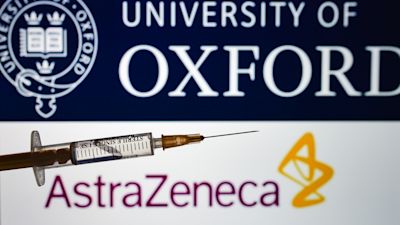First trial participants vaccinated with new Oxford covid vaccine

A vaccine developed by the University of Oxford to protect against the Beta variant of covid-19 is now being tested in human trials.
The University, working in partnership with AstraZeneca, will recruit approximately 2,250 people from the UK, South Africa, Brazil and Poland.
AstraZeneca has sponsored the phase 2/3 trial, which will further jab those who have been fully vaccinated with the original Oxford-AstraZeneca or mRNA vaccines.
Those taking part in the study in the UK must have received two doses of an approved vaccine at least three months ago.
The vaccine will be known as AZD2816 and has been developed using the same process as the previous jab. However, researchers have made minor genetic alterations to the spike based protein based on the Beta variant.
The original vaccine was designed to target the 2019 strain of Covid-19.
Dr Maheshi Ramasamy, Principal Investigator at the Oxford Vaccine Group, said:
‘The UK vaccine roll out programme has been incredibly successful at preventing hospitalisations and deaths, but we don’t know how long protection lasts.
This study will provide vital evidence on whether further doses including “tweaks” against new virus variants may be needed in the future.’
Initial data from the trial is expected later this year and, if successful, will be submitted to UK regulators for assessment as a booster vaccine.
Oxford-AstraZeneca explainer
How does the Oxford-AstraZeneca vaccine work?
How does the Oxford-AstraZeneca vaccine work?
The vaccine – called ChAdOx1 nCoV-19 – uses a harmless, weakened version of a common virus which causes a cold in chimpanzees.
Researchers have already used this technology to produce vaccines against a number of pathogens including flu, Zika and Middle East respiratory syndrome (Mers).
The virus is genetically modified so it is impossible for it to grow in humans.
Scientists have transferred the genetic instructions for coronavirus’s specific “spike protein” – which it needs to invade cells – to the vaccine.
When the vaccine enters cells inside the body, it uses this genetic code to produce the surface spike protein of the coronavirus.
This induces an immune response, priming the immune system to attack coronavirus if it infects the body.
Does it differ to Pfizer and Moderna’s vaccines?
Does it differ to Pfizer and Moderna’s vaccines?
Yes. The jabs from Pfizer and Moderna are messenger RNA (mRNA) vaccines.
Conventional vaccines are produced using weakened forms of the virus, but mRNAs use only the virus’s genetic code.
An mRNA vaccine is injected into the body where it enters cells and tells them to create antigens.
These antigens are recognised by the immune system and prepare it to fight coronavirus.
No virus is needed to create an mRNA vaccine. This means the rate at which the vaccine can be produced is accelerated.